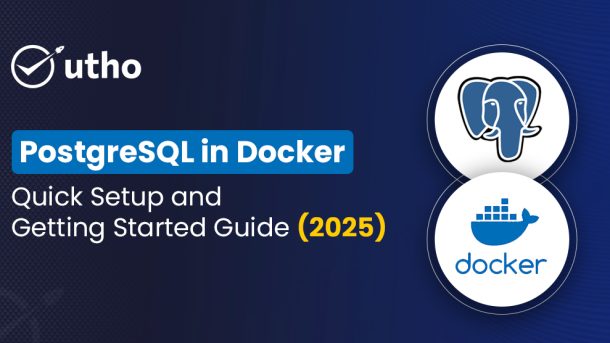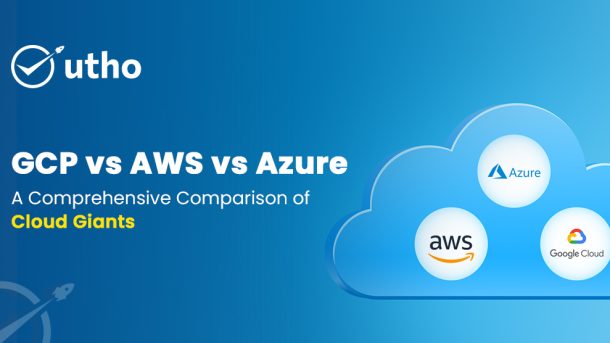Today’s software development moves quickly. Speed, flexibility, and reliability are vital, not just features. If you're a solo developer making an MVP, a startup that's scaling up, or an enterprise with complex setups, your workflows need to be quick, repeatable, and work on any platform.
That’s where containerization plays a pivotal role.
In 2025, Docker will remain the top choice for containerization. It provides a strong, standard method to package and run apps in separate environments. Docker has changed how we develop, ship, and deploy software. It helps manage complex systems more easily. This leads to fewer errors, quicker updates, and more reliable results.
PostgreSQL is a strong, open-source relational database. It’s a top choice for developers and database admins. PostgreSQL is known for its stability and flexibility. It meets SQL standards, making it trusted by organisations around the world. This includes both small projects and critical applications.
The Power of Combining PostgreSQL with Docker
Imagine merging two powerful tools in modern development: PostgreSQL, a strong relational database, and Docker, the leading containerization platform. Together, they offer enhanced speed, efficiency, and flexibility.
By putting PostgreSQL into a Postgres Docker container, you simplify deployment. This approach also changes how databases are built, managed, and scaled in real-world situations.
Here’s how:
Deploy Fully Functional Database Environments in Seconds
With Docker, you can spin up a ready-to-use PostgreSQL instance using a single command. There’s no need for manual installation, configuration files, or system-level setup. Whether you’re starting a local project or setting up a production environment, launching a Postgres Docker container is fast. It only takes a few moments. This lets developers concentrate on building features instead of struggling with setup.
Eliminate “It Works on My Machine” Problems
One big challenge in software development is environment mismatch. What works on one system often fails on another. Docker eliminates this by packaging everything—PostgreSQL version, configurations, extensions—into a consistent, reproducible container. Your Postgres Docker container works the same on all developer machines, CI servers, and cloud instances. This cuts down on bugs and deployment failures.
Simplify Configuration and Management
Configuring PostgreSQL manually can be time-consuming and error-prone. With Docker, configuration becomes streamlined. You can pass environment variables, such as usernames, passwords, and database names, at runtime. There's no need to edit PostgreSQL’s config files directly. Need to update your setup? Modify a line in your Docker Compose file and redeploy. It’s that simple.
Improve Team Collaboration with Version-Controlled Environments
You can define a Postgres Docker container in a docker-compose.yml file or a Dockerfile. This way, your whole database environment is version-controlled, just like your code. Teams can share exact setups, including credentials, volume mappings, ports, and PostgreSQL configurations. This cuts onboarding time, boosts consistency among team members, and makes sure everyone has the same starting point.
Streamline CI/CD Pipelines with Consistent, Automated Setups
Continuous Integration and Continuous Deployment (CI/CD) pipelines rely on predictable environments. By containerizing PostgreSQL, you can easily include it as a service in your test or deployment pipelines. A fresh Postgres Docker container can be spun up, used for automated testing, and torn down—all in a clean, isolated state. This improves test accuracy, reduces flaky test results, and speeds up the release process.
Why This Guide Matters
In this guide, we’ll explain why a Postgres Docker container is the top choice for developers, DevOps engineers, and database experts.
Whether you're:
- Setting up a local development environment,
- Running tests in CI/CD,
- Deploying microservices with individual databases,
- Or managing production workloads with containers,
This handbook will share valuable insights, optimal techniques, and detailed steps to help you make the most of PostgreSQL in Docker.
Why Use PostgreSQL in Docker?
Running PostgreSQL in Docker isn’t just trendy—it’s a smart choice for today’s development and operations teams. Here’s why it’s important:
Speed Up Deployment Installing PostgreSQL the traditional way involves many steps. You need to download packages, set up user roles, edit .conf files, and fix system dependencies.
With Docker, you can launch a ready-to-use PostgreSQL instance in seconds using a single docker run command. No setup fatigue. No compatibility issues.
Ensure Consistency Across Environments Ever heard “but it worked on my laptop”? That ends now. Containerizing PostgreSQL keeps your database consistent in development, staging, and production. This also removes environment drift.
Simplify Setup and Configuration Manual setups are tedious. Using environment variables such as POSTGRES_USER and POSTGRES_DB makes PostgreSQL configuration easy. You don't need to make any direct edits.
Enable Portability Docker containers are platform-agnostic. Whether on laptops, VMs, Kubernetes clusters, or cloud servers—your PostgreSQL setup just works, without needing reconfiguration.
Isolate Your Database Stack A Docker-based PostgreSQL instance runs independently of your host OS. This reduces conflicts with other services and keeps your stack modular and clean.
Streamline Team Collaboration Using a shared docker-compose.yml, all team members have the same setup.
This reduces onboarding time and boosts overall productivity.
Support DevOps and CI/CD Pipelines Need to spin up a test DB, run integration tests, and tear it down automatically? Docker makes this process effortless—helping you maintain speed and consistency across pipelines.
Challenges of Running PostgreSQL in Docker
A Postgres Docker container offers great speed, consistency, and portability. However, it’s not a silver bullet. Like any tool, it has trade-offs. Knowing these challenges early helps you create more resilient, secure, and production-ready deployments.
Let’s look at common pitfalls developers and DevOps teams face when running PostgreSQL in Docker—and how to fix them:
1. Data Persistence Issues
Docker containers are ephemeral by nature—meaning, once a container is removed, all data inside it is lost.
This becomes a major problem if your PostgreSQL data is stored only within the container’s internal file system. For example, if you forget to mount a volume for data persistence, stopping or restarting the container could wipe out your entire database.
Solution: Use Docker volumes or bind mounts. Map PostgreSQL’s data directory (/var/lib/postgresql/data) to a storage location that lasts. This ensures that your data survives container restarts, upgrades, or failures.
2. Performance Overhead (Especially on Mac/Windows)
On Linux, Docker runs natively, and performance is near-native. On macOS and Windows, Docker usually runs in a lightweight virtual machine (VM). It uses hypervisors like HyperKit or WSL2 for this purpose. This can cause noticeable I/O delays for database tasks, especially during heavy load or large queries.
Impact: You may notice slower performance during local development. This doesn't always match real-world conditions, so it can be tough to optimise performance-critical applications.
Solution:
- Use volume caching and optimize Docker’s resource allocation (CPU, RAM).
- Avoid unnecessary syncs between host and container.
- For production, use Linux-based deployments. If latency matters, run PostgreSQL outside the Docker VM. 3. Debugging and Troubleshooting Complexity
When PostgreSQL runs natively on your machine, you have direct access to logs, files, and configuration paths. Inside a container, however, these elements are abstracted. Debugging requires extra effort:
- You need to docker exec into the container.
- Logs might be redirected.
- Configuration changes often require container restarts.
Challenge: This makes it slightly harder for beginners to identify issues like failed connections, permission errors, or corrupted databases.
Solution:
- Use Docker logs (docker logs container_name) and enable PostgreSQL’s verbose logging.
- Create custom Docker images or volumes if you need to persist specific config files.
- Familiarize yourself with command-line tools like psql, pg_dump, and pg_restore.
4. Upgrade and Migration Risks
Upgrading PostgreSQL inside Docker is not as simple as clicking “update.” You typically need to:
- Pull a new image version.
- Create a new container.
- Mount the old data volume.
- Run a migration or dump/restore process.
Risk: Upgrading PostgreSQL this way can harm data if not done carefully. This is especially true when moving between major versions.
Solution:
- Always backup your database before upgrading.
- Use tools like pg_dumpall or pg_upgrade.
- Test the upgrade process in staging environments before applying it to production. 5. Security Misconfigurations
Docker makes it easy to deploy PostgreSQL. But this convenience can sometimes result in security shortcuts, especially during development or testing.
Common mistakes:
- Using weak or hardcoded passwords via environment variables.
- Exposing the PostgreSQL port (5432) to the public internet.
- Running containers with root privileges.
- Not using SSL/TLS for remote access.
Solution:
- Use .env files or Docker secrets to manage sensitive credentials securely.
- Only expose ports to trusted networks or via internal service links (like within Docker Compose).
- Implement firewall rules, SSL, and database-level user permissions.
- Never run your containerized database as root.
Awareness is the First Step to Resilience
A Postgres Docker container provides speed, flexibility, and repeatability. But this only works well when set up carefully. By being aware of these common challenges, you can:
- Design safer and more resilient containerised database environments.
- Prevent costly data loss or misconfigurations.
- Make smarter decisions when scaling or updating your infrastructure.
To sum up, knowing these potential pitfalls helps you use Docker and PostgreSQL with confidence. This is true for both local development and production.
Prerequisites
Before running a postgres docker container, ensure you have:
- Docker installed (docker --version)
- Basic command-line knowledge
- (Optional) Docker Compose installed (docker-compose --version)
- (Optional) PostgreSQL client tools (psql)
Step-by-Step Guide to Running PostgreSQL in Docker
Step 1: Pull the Official PostgreSQL Docker Image
docker pull postgres
This image is optimized and regularly updated—ideal for any postgres docker container use case.
Step 2: Start a PostgreSQL Container
docker run --name pg_container \
-e POSTGRES_PASSWORD=your_password \
-d postgres
This creates your first postgres docker container.
Step 3: Access the Database
docker exec -it pg_container psql -U postgres
Interact directly with your postgres docker container to run SQL commands.
Step 4: Persist Data Using Docker Volumes
docker run --name pg_container \
-e POSTGRES_PASSWORD=your_password \
-v pgdata:/var/lib/postgresql/data \
-d postgres
Volumes ensure your postgres docker container doesn’t lose data after restarts.
Step 5: Use Custom Environment Variables
docker run --name pg_container \
-e POSTGRES_USER=admin \
-e POSTGRES_PASSWORD=securepass \
-e POSTGRES_DB=app_db \
-d postgres
Create a tailored postgres docker container with a custom DB and user.
Step 6: Expose PostgreSQL Locally
docker run --name pg_container \
-e POSTGRES_PASSWORD=your_password \
-p 5432:5432 \
-d postgres
Now your postgres docker container can connect with tools like pgAdmin, DBeaver, etc.
Step 7: Use Docker Compose
yaml
version: '3.8'
services:
db:
image: postgres
container_name: pg_container
environment:
POSTGRES_USER: admin
POSTGRES_PASSWORD: securepass
POSTGRES_DB: app_db
ports:
- "5432:5432"
volumes:
- pgdata:/var/lib/postgresql/data
volumes:
pgdata:
Launch your postgres docker container with:
docker-compose up -d
Step 8: Backup and Restore
Backup:
docker exec -t pg_container pg_dumpall -c -U postgres > backup.sql
Restore:
docker exec -i pg_container psql -U postgres < backup.sql
Critical for maintaining your postgres docker container across failures.
Step 9: Best Practices
- ✅ Always use volumes
- ✅ Store secrets in .env or Docker Secrets
- ✅ Monitor containers
- ✅ Integrate into CI/CD
- ✅ Avoid root users in production postgres docker container setups
Common Issues & Fixes
- ❌ Container crashes: Add -e POSTGRES_PASSWORD=...
- ❌ Port not accessible: Use -p 5432:5432
- ❌ Data loss: Use volume mounts like -v pgdata:/var/lib/postgresql/data
Final Thoughts
In 2025, the postgres docker container is not just a dev tool—it’s a scalable, production-ready strategy. Using Docker with PostgreSQL changes your database experience, whether you're a hobbyist or a pro.
Summary
| Step | Outcome |
| Pull Docker Image | Official, secure PostgreSQL ready to use |
| Run Container | Fast, local PostgreSQL instance |
| Use Volumes | Persistent storage for data safety |
| Expose Ports | Allow tools and apps to connect |
| Use Compose | Scalable, multi-container support |
| Backup & Restore | Data recovery made easy |
| Apply Best Practices | Security, performance, and scale |




















